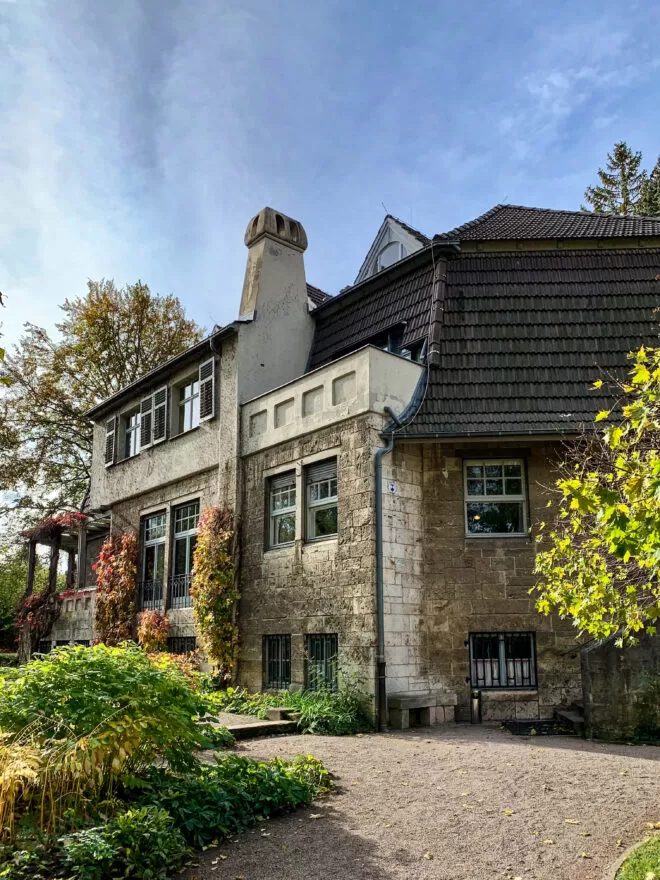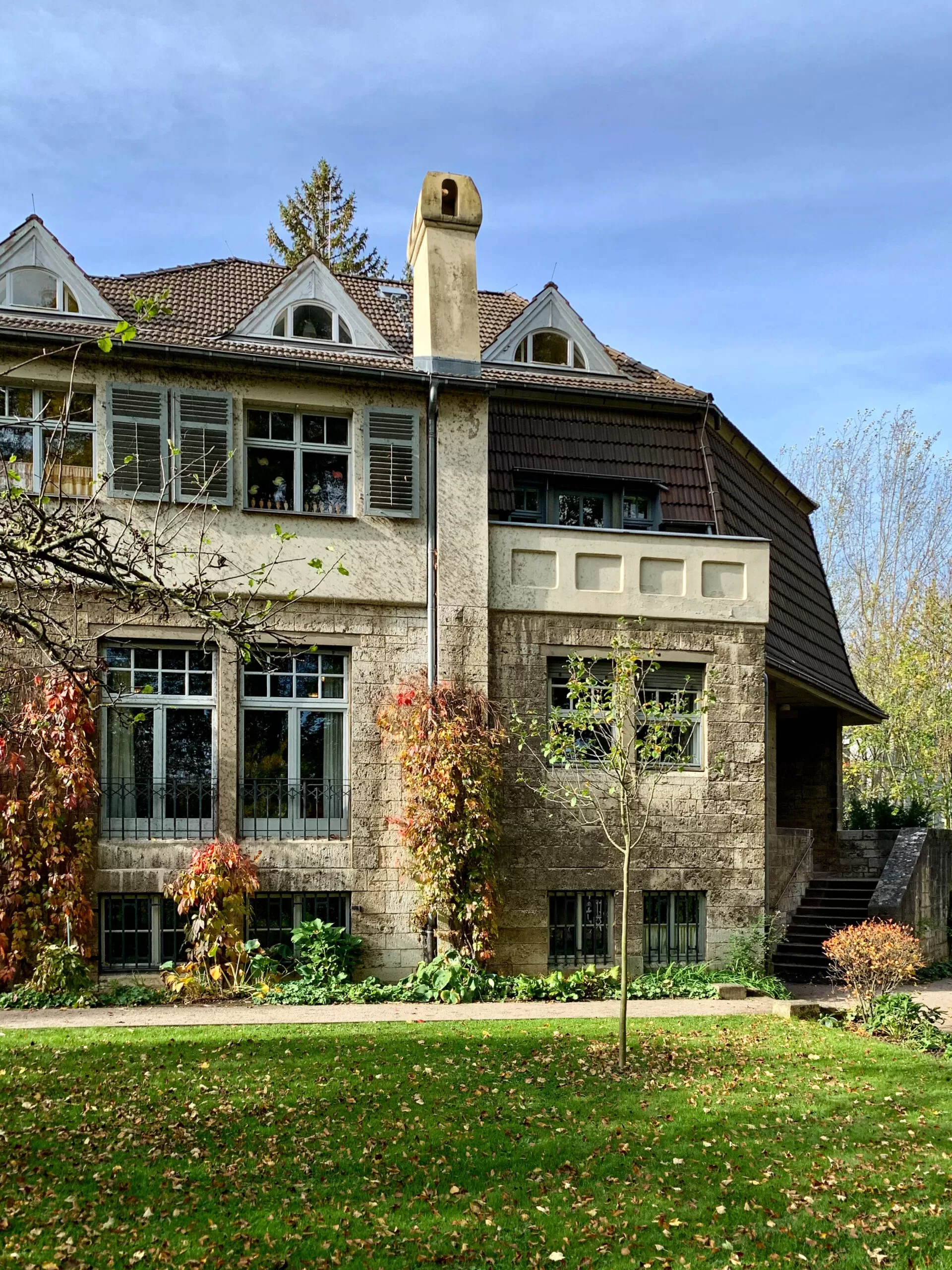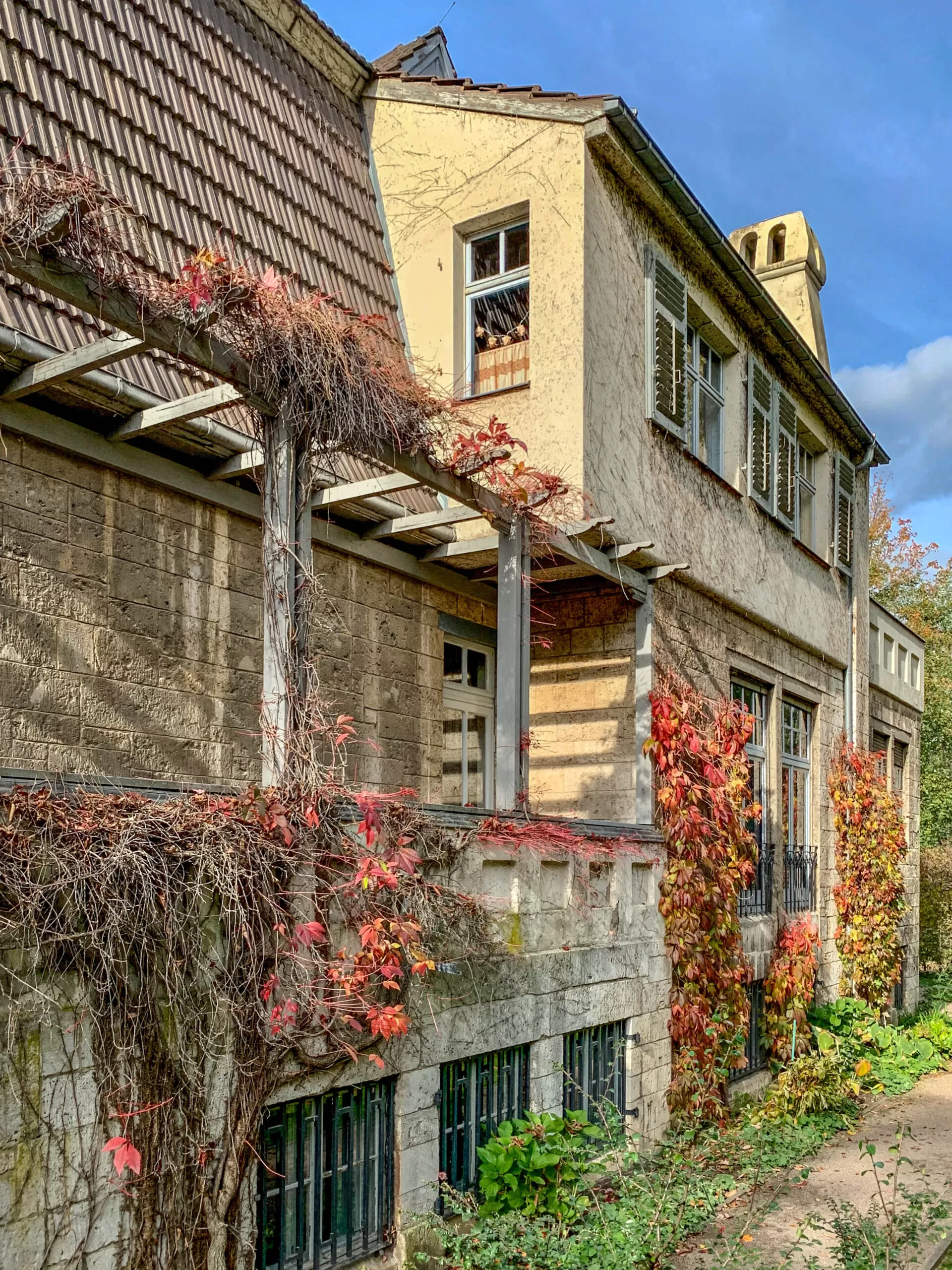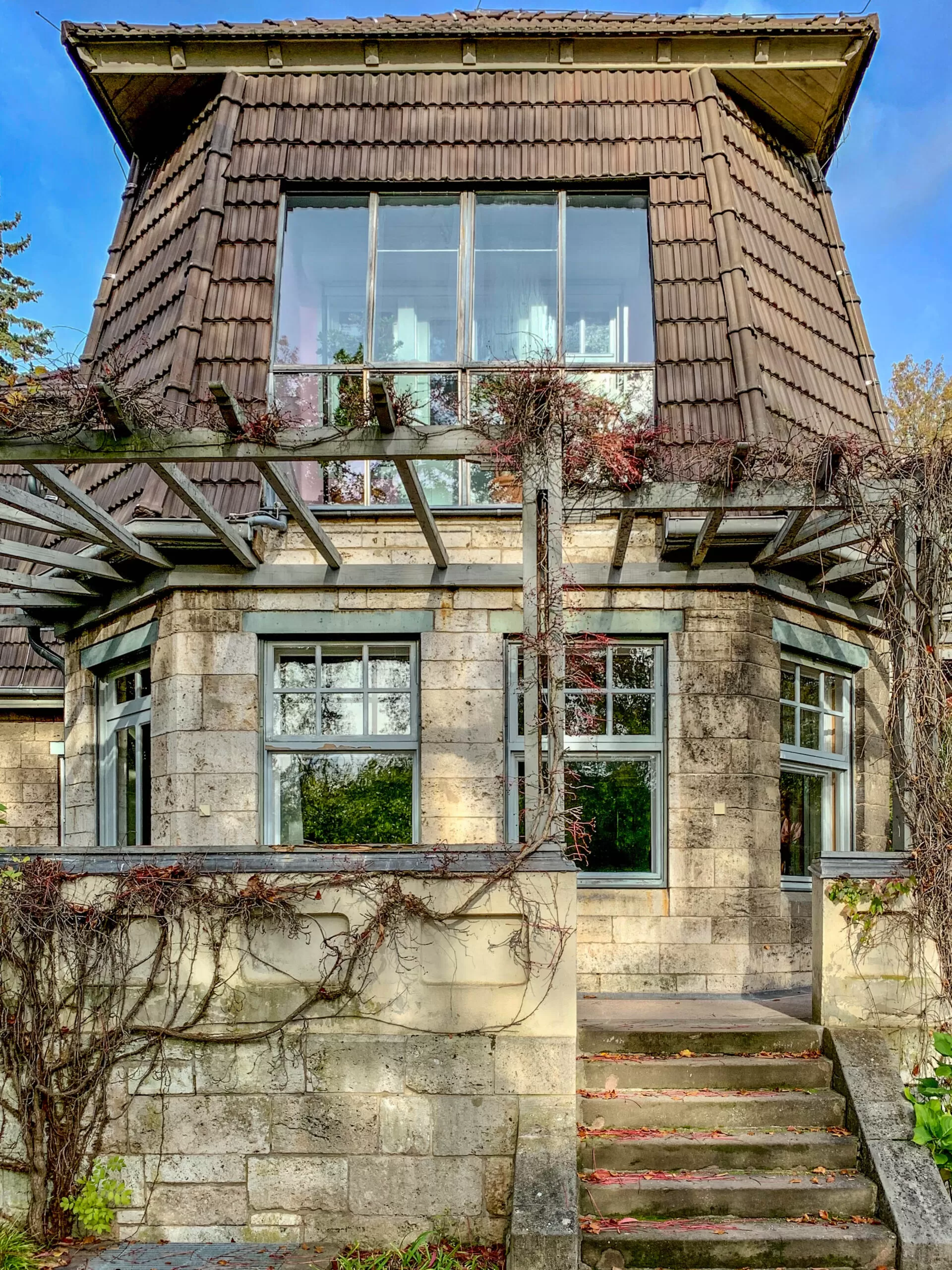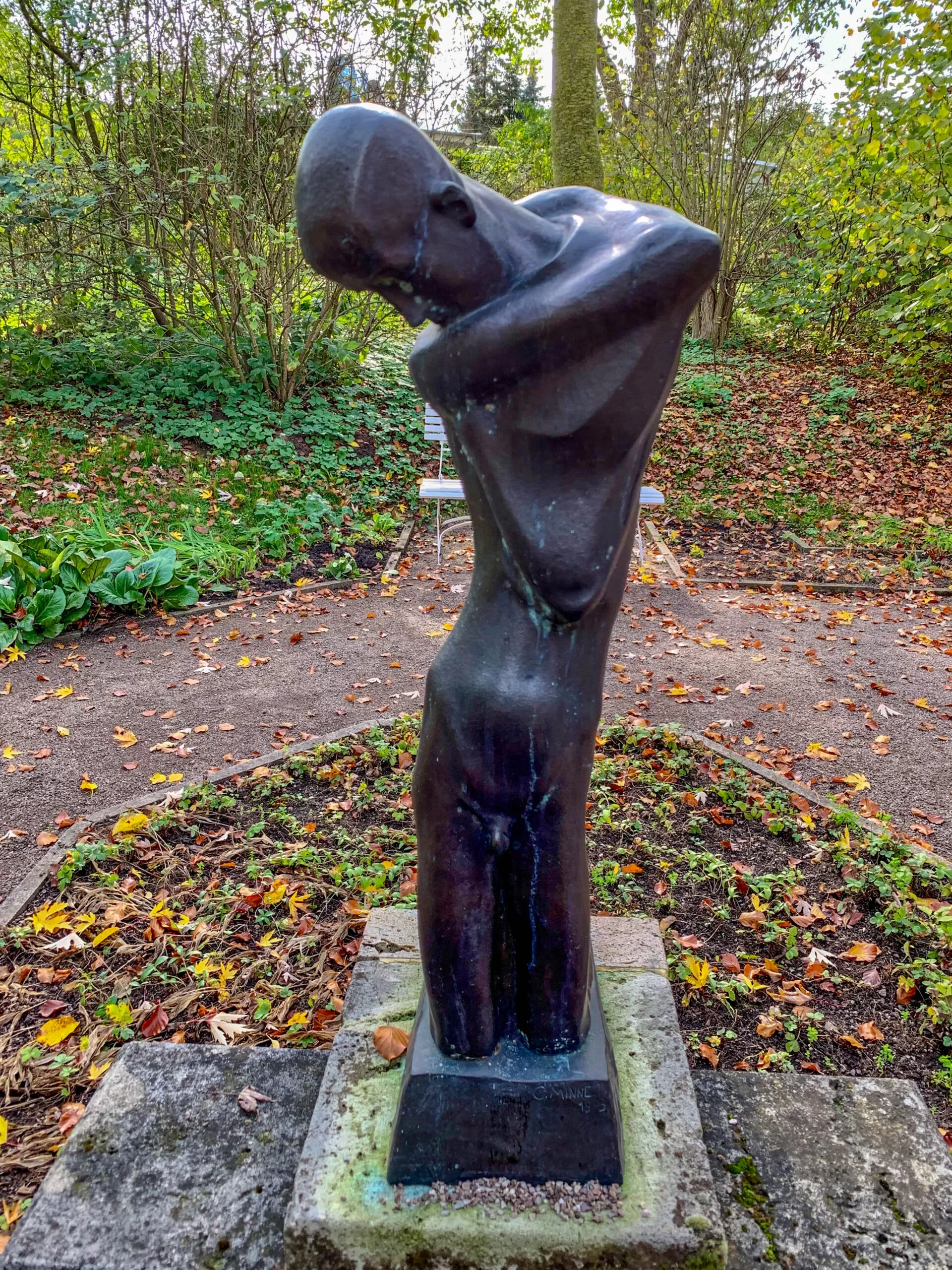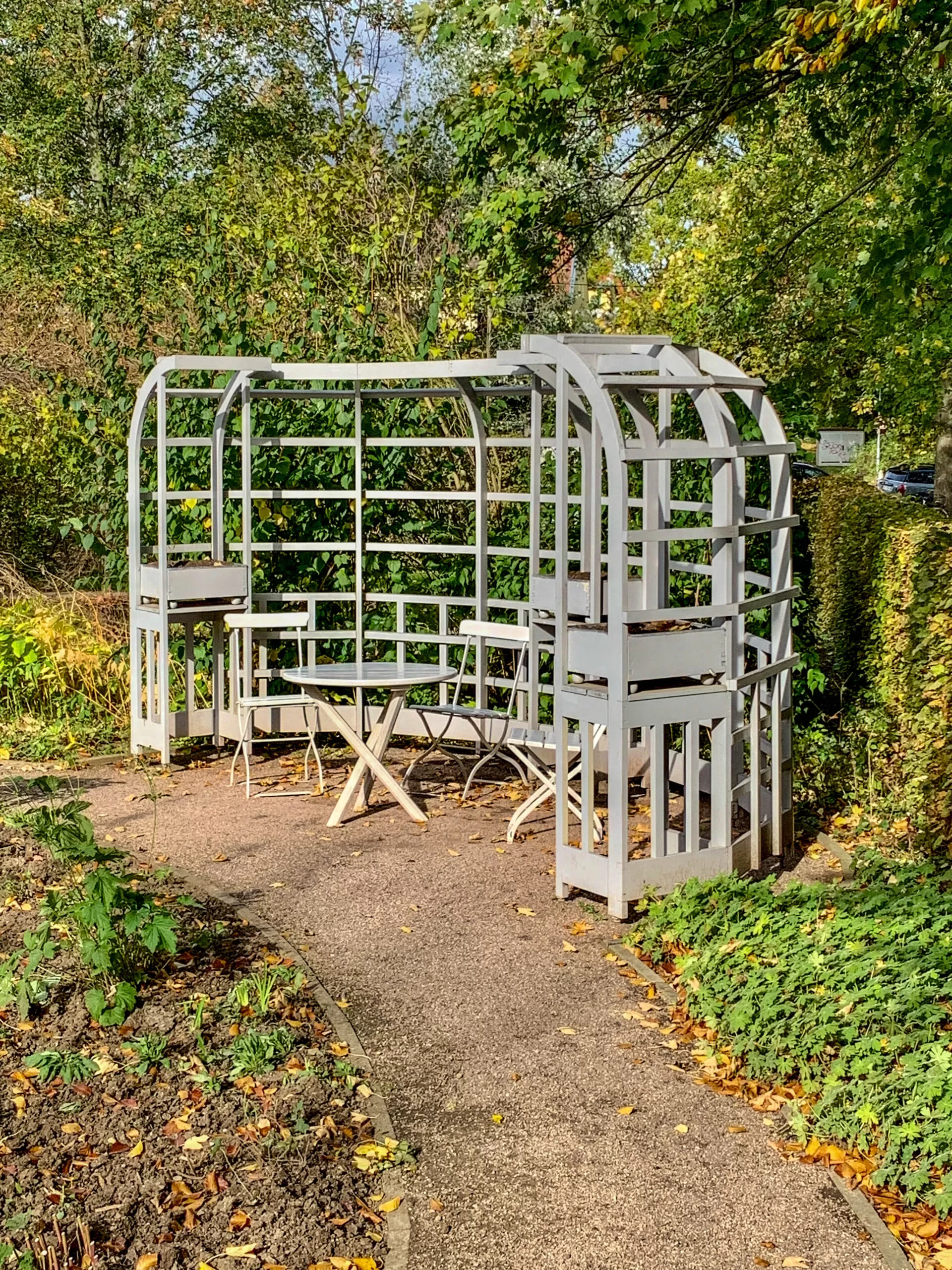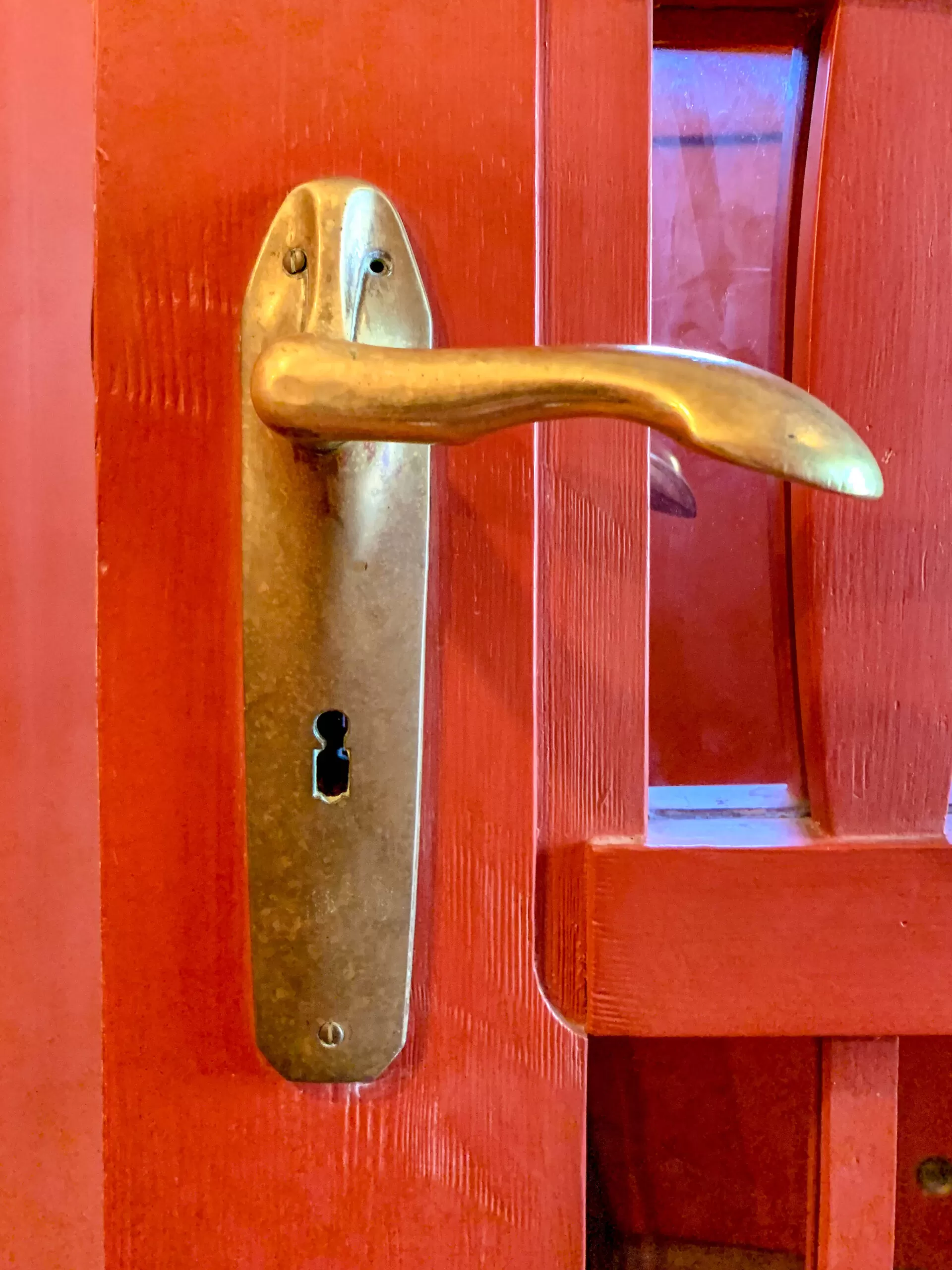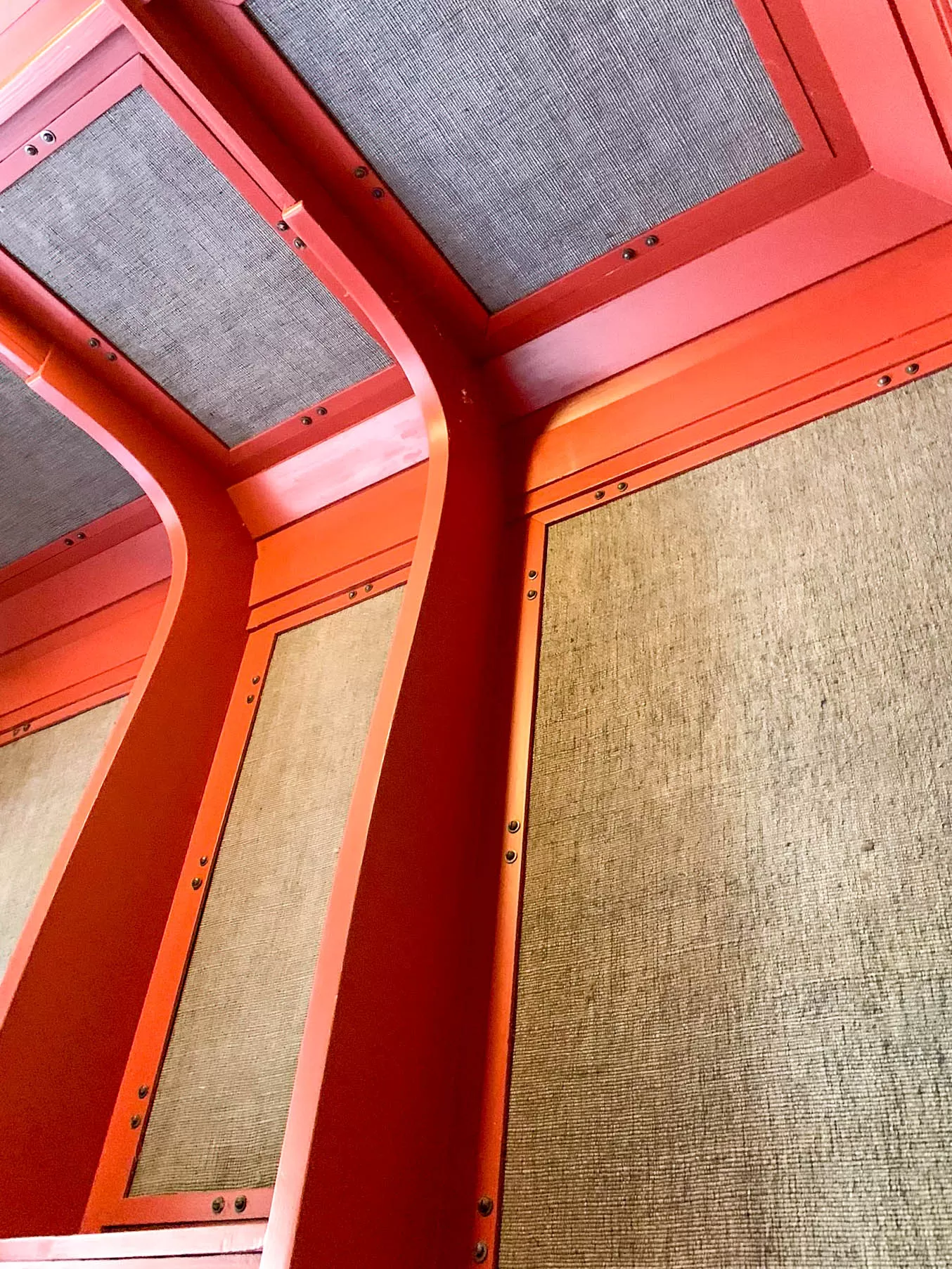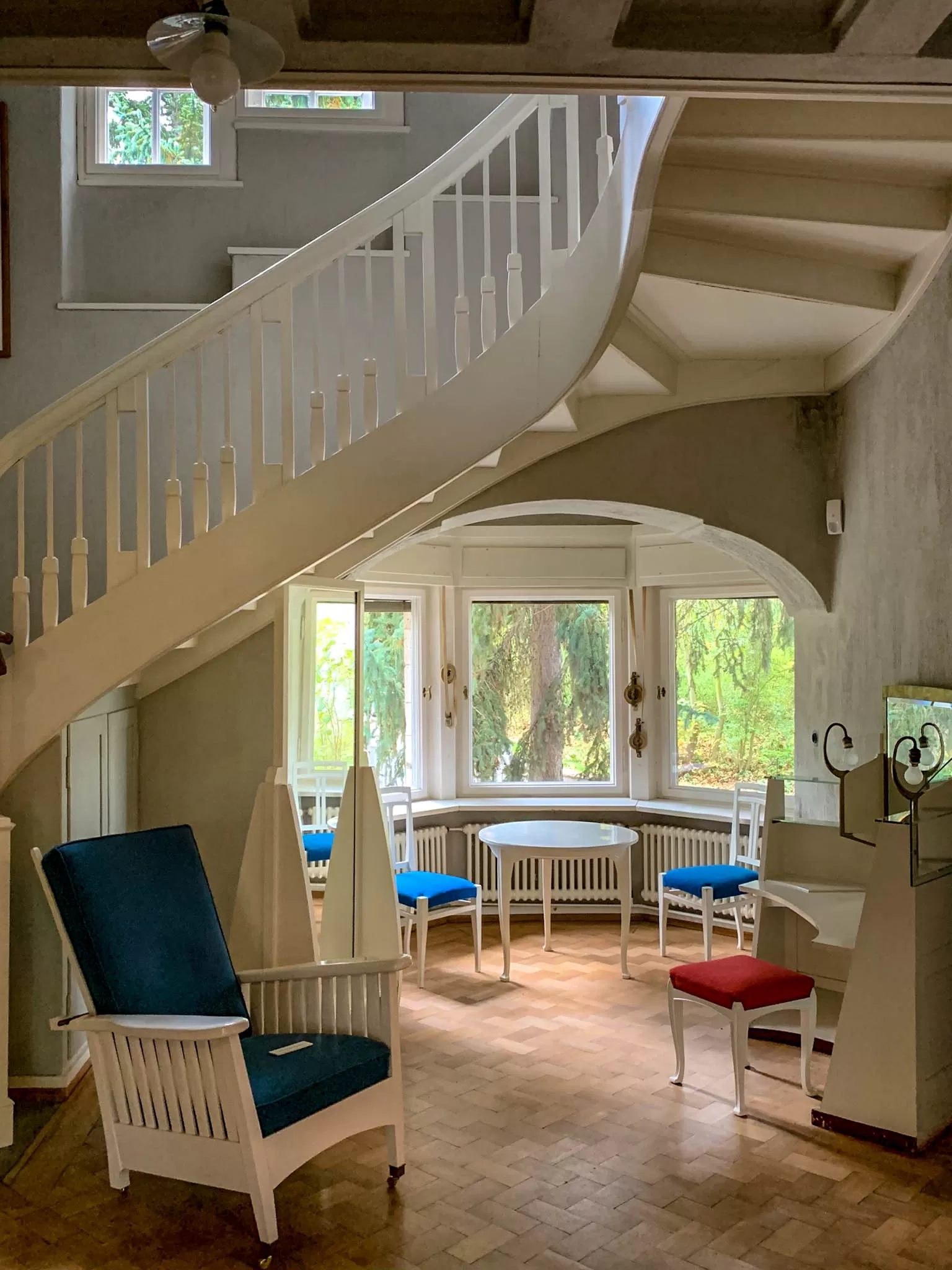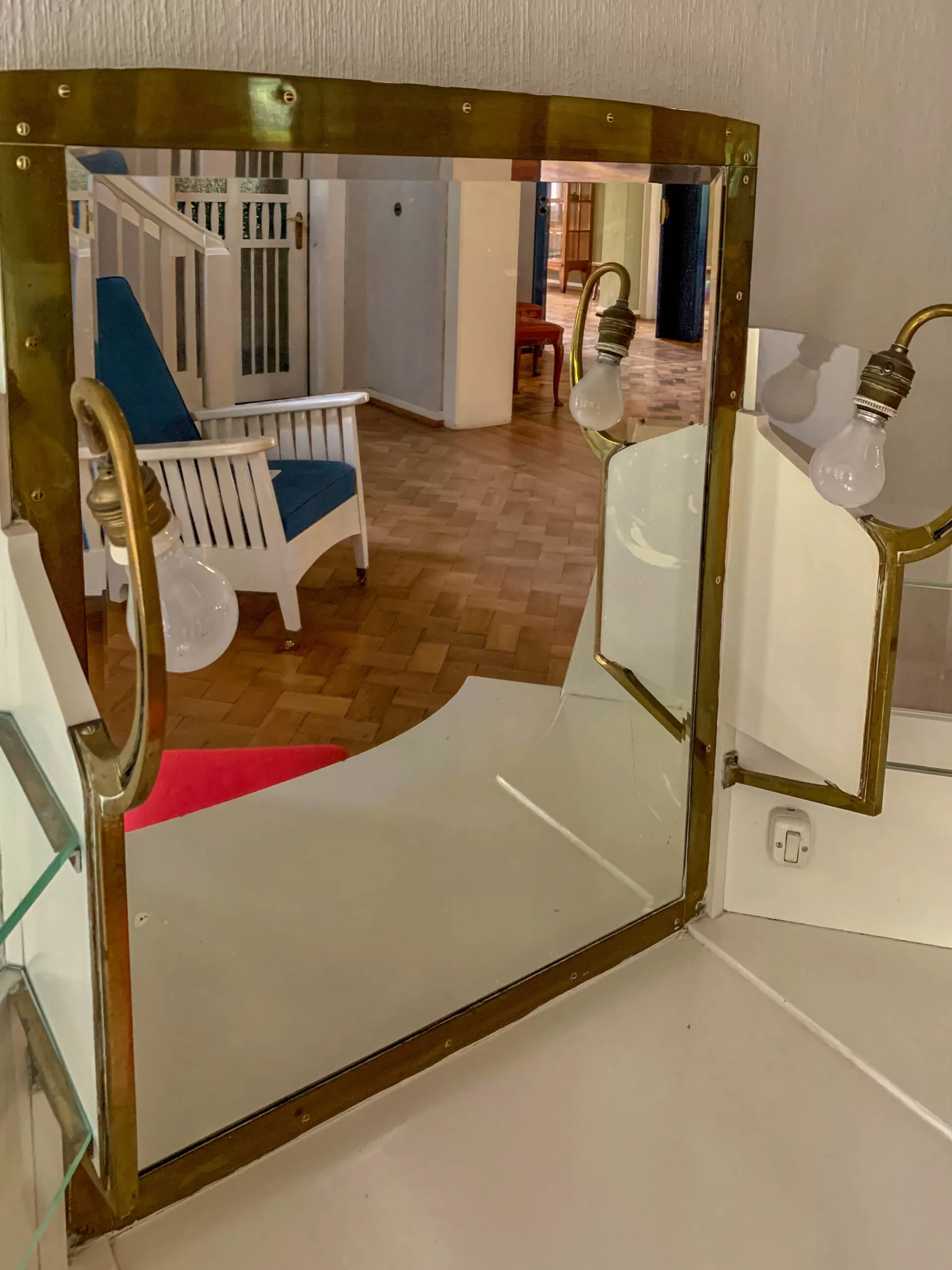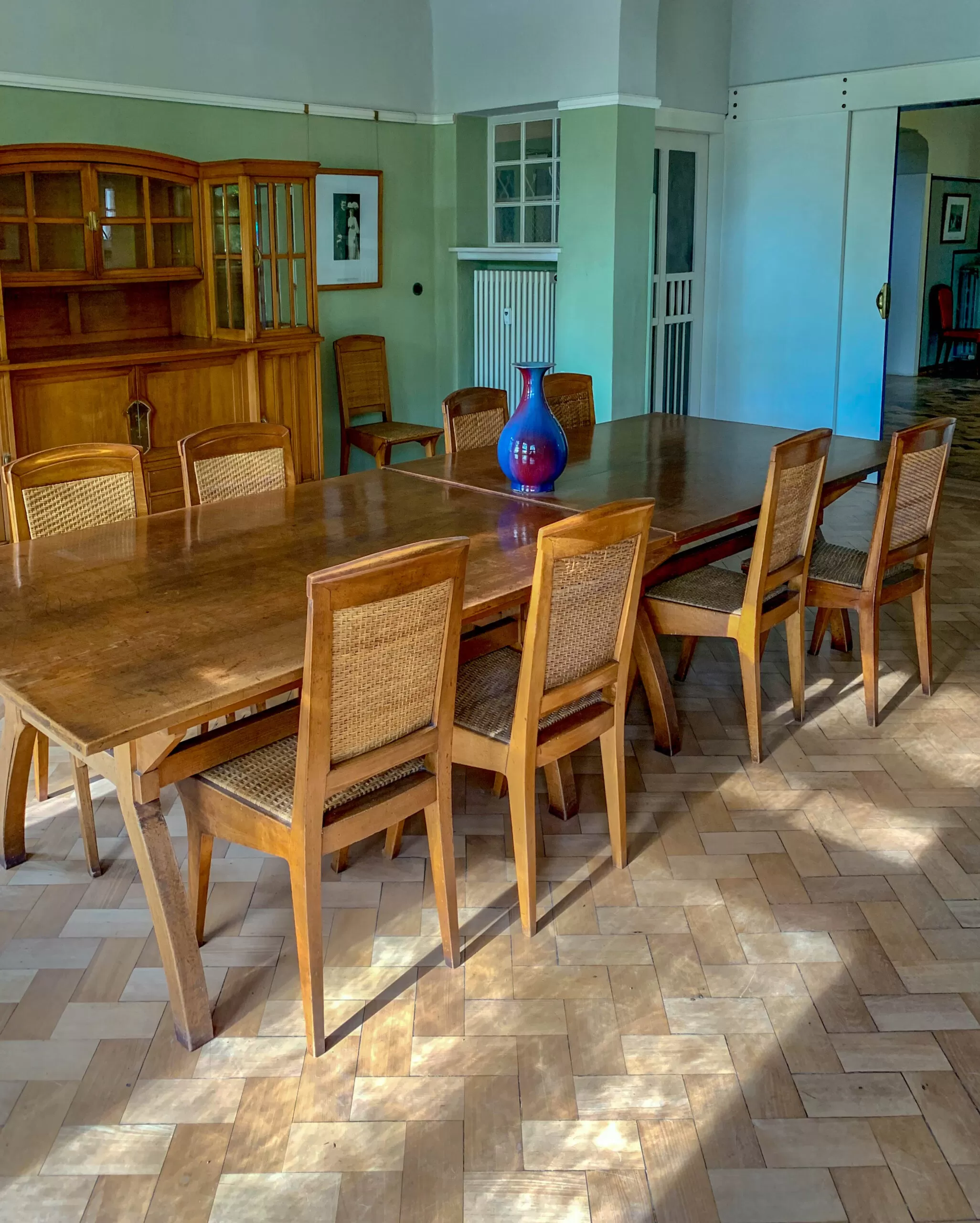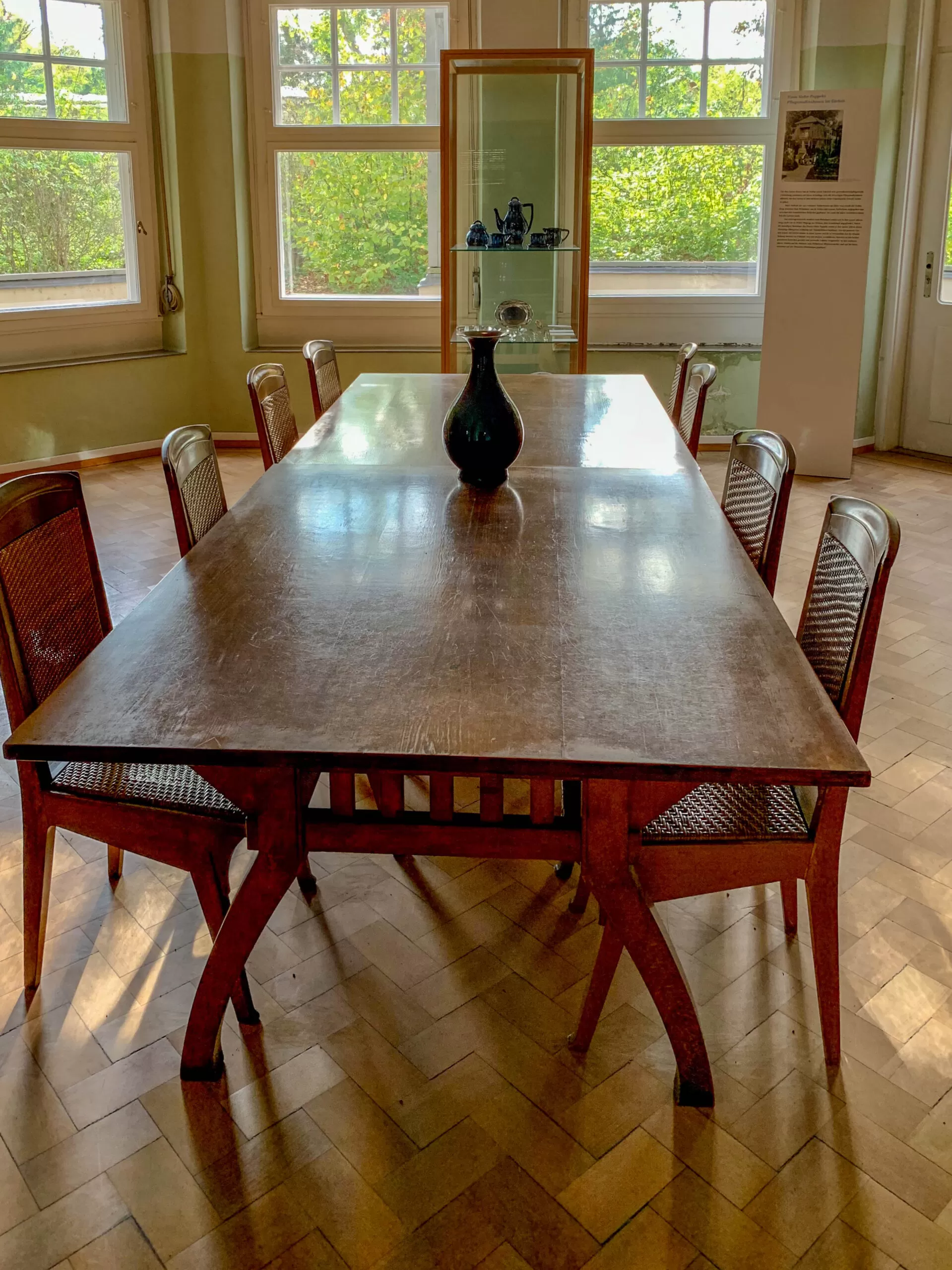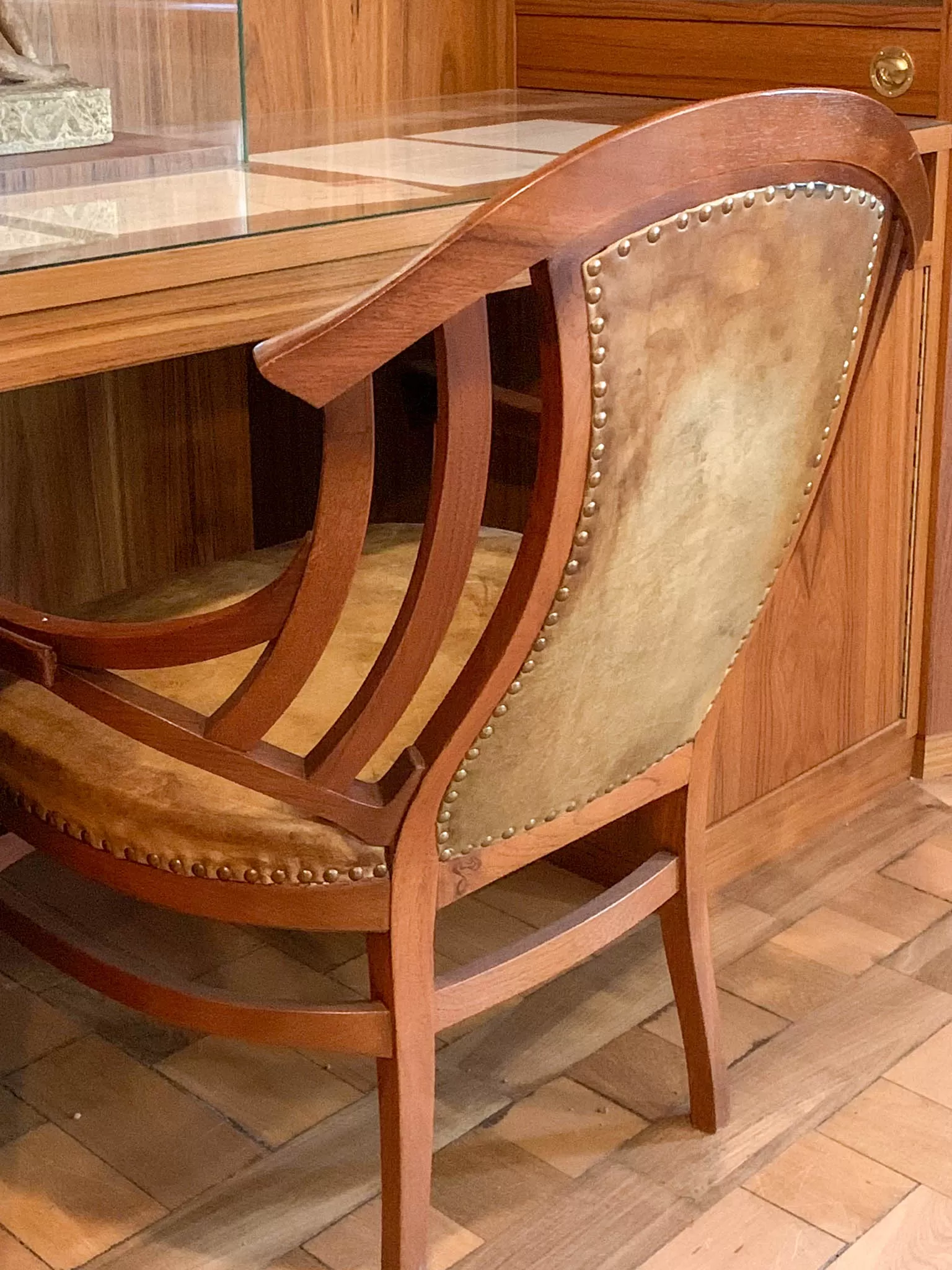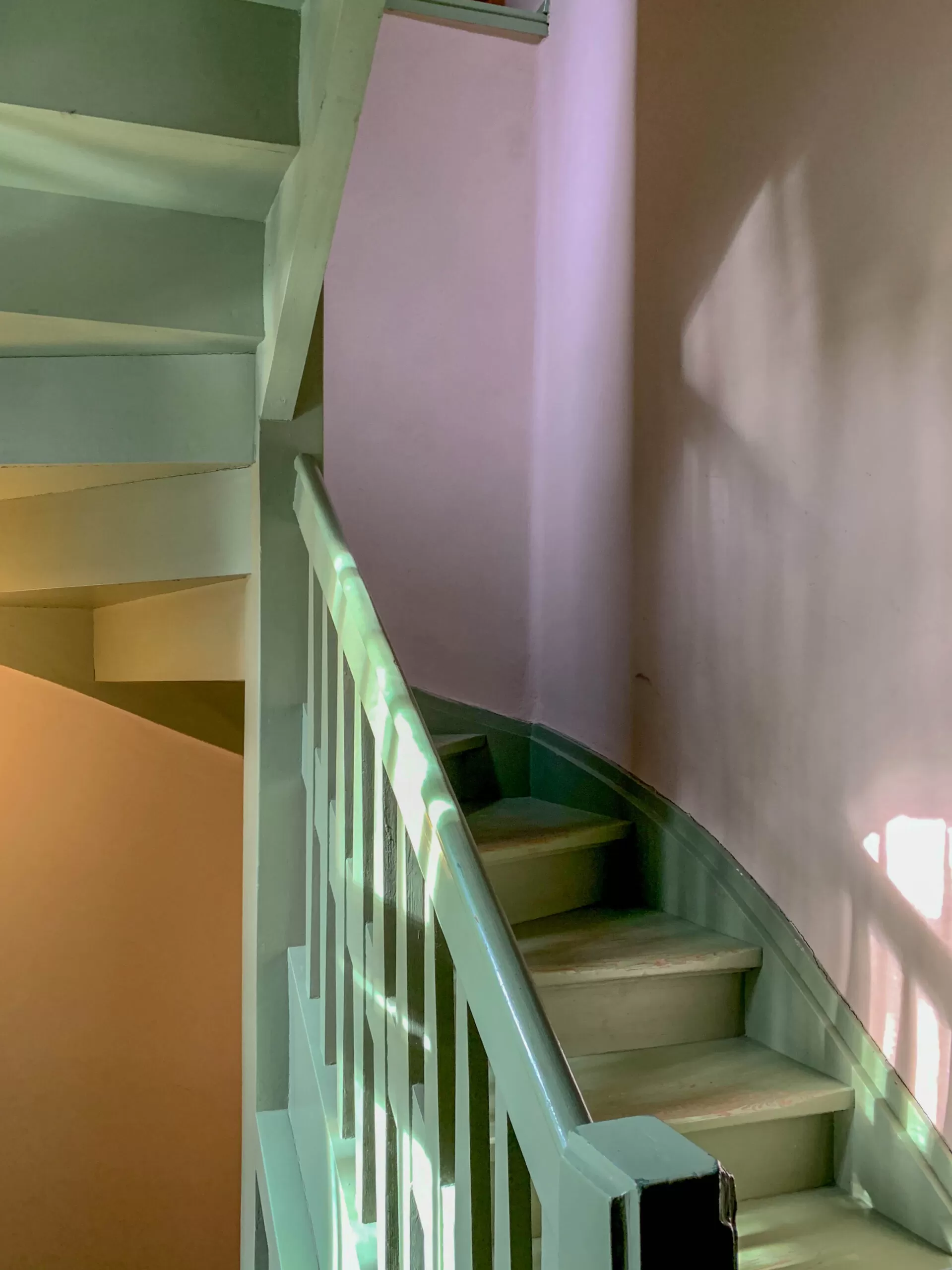1906 – 1907
Architect: Henry van de Velde
Belvederer Allee 58, Weimar, Germany
House Hohe Pappeln is the former residence of Belgian architect and designer Henry van de Velde and is now open to the public as a museum.
Background
In 1902, the Belgian architect and designer Henry van de Velde came to Weimar on the initiative of Harry Graf Kessler and Elisabeth Förster-Nietzsche.
In Weimar, van de Velde and his family initially moved into a rented apartment on Cranachstrasse in the Silberblick residential district, which was only a few hundred meters from Elisabeth Förster-Nietzsche’s villa.
After the domicile had become too small for the family of 7 in the meantime, van de Velde had the country house Hohe Pappeln built according to his own designs at Belvederer Allee 58 from 1906 to 1907.
He initially set up his Arts and Crafts Seminar, founded on October 15, 1902, and his private studios in the precursor of the Prellerhaus studio building in Weimar (later planned by Walter Gropius in Dessau).
On behalf of the Grand Duke Wilhelm-Ernst of Saxony-Weimar, he was to advise Thuringian craftsmen on design.
The Grossherzoglich-Sächsische Kunstgewerbeschule Weimar was founded in 1908 on van de Velde’s initiative and financed by Grand Duke Wilhelm Ernst of Saxe-Weimar.
Van de Velde was its director until its closure in 1915.
House Hohe Pappeln
The villa is located on the west side of Belvedere Avenue, bordering on an area of tall poplar trees.
A traffic circle for carriages led to the entrance of the house.
Through an anteroom with a staircase leading to the private rooms on the upper floor, one entered the salon, which served as a parlor, music salon and boudoir.
From the salon, sliding doors led to the master’s study and the dining room, from which a staircase led directly to the garden.
The kitchen was located in the basement.
Van de Velde planned the exterior design of his house from the interior structure and function of the rooms.
Interiors
Wall color, fixtures, furniture, fabrics, and ceramics – everything was designed by van de Velde himself and harmoniously coordinated. He was guided by the aesthetics of modern industry and designed according to principles of practicality.
The original furniture of the house went out of the country with van de Velde’s departure.
Today’s exhibited furniture was designed by him in 1904 for the Weimar apartment of the journalist and playwright Max von Münchhausen.
The functional fixtures and the textile elements of the study were reconstructed in 2015 according to historical models.
Replicas of the original furniture have also been in the living hall since 2023.
Garden
From the very beginning of the planning, the garden was part of the overall concept.
Each facade is assigned a different area: To the street was an ornamental garden with fruit trees, to the south side an open space with a fountain and in front of the utility rooms of the house a kitchen garden with a greenhouse.
A fountain with a figure of a kneeling youth by Georg Minne is located in the garden.
1917
Henry van de Velde lived in the house Hohe Pappeln with his wife and five children until 1917.
In 1919 the house came into the possession of the banker’s widow Anna Reichenheim, who sold it in 1925 to Heinrich Bichmann and his wife.
In 1938, the Evangelical Church of Thuringia acquired it and made it available to the German Christians under Siegfried Leffler.
After Leffler’s escape in 1945, the house changed hands many times in the following years and was frequently rebuilt.
Renovation and Restoration
In 1985, the house was listed as a historic monument. From 1990 to 1994, the building was renovated in accordance with the preservation order.
Owner of the house is the Klassik Stiftung Weimar.
Residential area and garden are open to the public.

